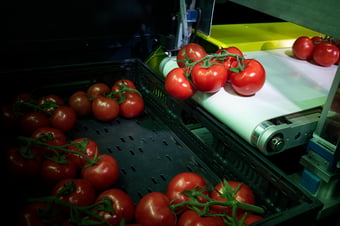Current State of GRoW Technology and its Application
The GRoW robot represents a complete harvesting solution for greenhouse growers specializing in truss tomatoes. Remarkably, GRoW doesn't require any greenhouse modifications and can seamlessly integrate into growers' existing operations, including infrastructure, logistics, packing, and handling systems.
With two robotic arms, GRoW efficiently harvests tomatoes on the vine while collecting extensive data to provide growers with insights and data analysis of their crops and greenhouse performance.
Since 2021, GRoW has undergone extensive trials in large-scale commercial tomato-growing facilities in The Netherlands, resulting in successful outcomes and positive feedback that contribute to the robot's continued enhancement. Collaborative trials with innovative growers will further shape GRoW's direction and future.
Anticipating Developments in the Next Year
- AI Machine-Learning Advancements
Beyond tomato harvesting, GRoW's capabilities extend to data collection and analysis within the greenhouse environment. This data informs and optimizes its harvesting processes. AI-driven machine learning allows GRoW to improve its harvesting accuracy with each pick. As it gains real-world situational awareness, it learns to overcome challenges, contributing to the growth of its AI capabilities. - Increased Collaboration for Progress
Over the next 12 months, heightened interest in high-tech greenhouse robotics is expected. Growers are likely to become more receptive to robotics as solutions for various sector challenges, leading to increased collaboration. This cascading effect will drive faster development and better trial results. Collaborative efforts with automation suppliers and partners across the industry can lead to innovations in various aspects of harvesting, packing, and picking processes, potentially paving the way for standardized robotics solutions. - Swelling Demand for Harvest Robots
Harvesting remains the most labor-intensive task in greenhouses, but GRoW can significantly reduce human hours required for vine tomato harvesting. With the labor crisis intensifying, the demand for labor-saving robots is projected to grow. Forward-thinking growers looking to future-proof their operations and mitigate labor shortages are encouraged to embrace robotics today.
Action for the Future: Reserve Your GRoW Robot
As the demand for labor-saving solutions surges, it's prudent for growers to explore the benefits of GRoW and its potential impact on greenhouse operations. By implementing robotics, growers can optimize efficiency, overcome labor challenges, and ensure a prosperous future for their businesses.



